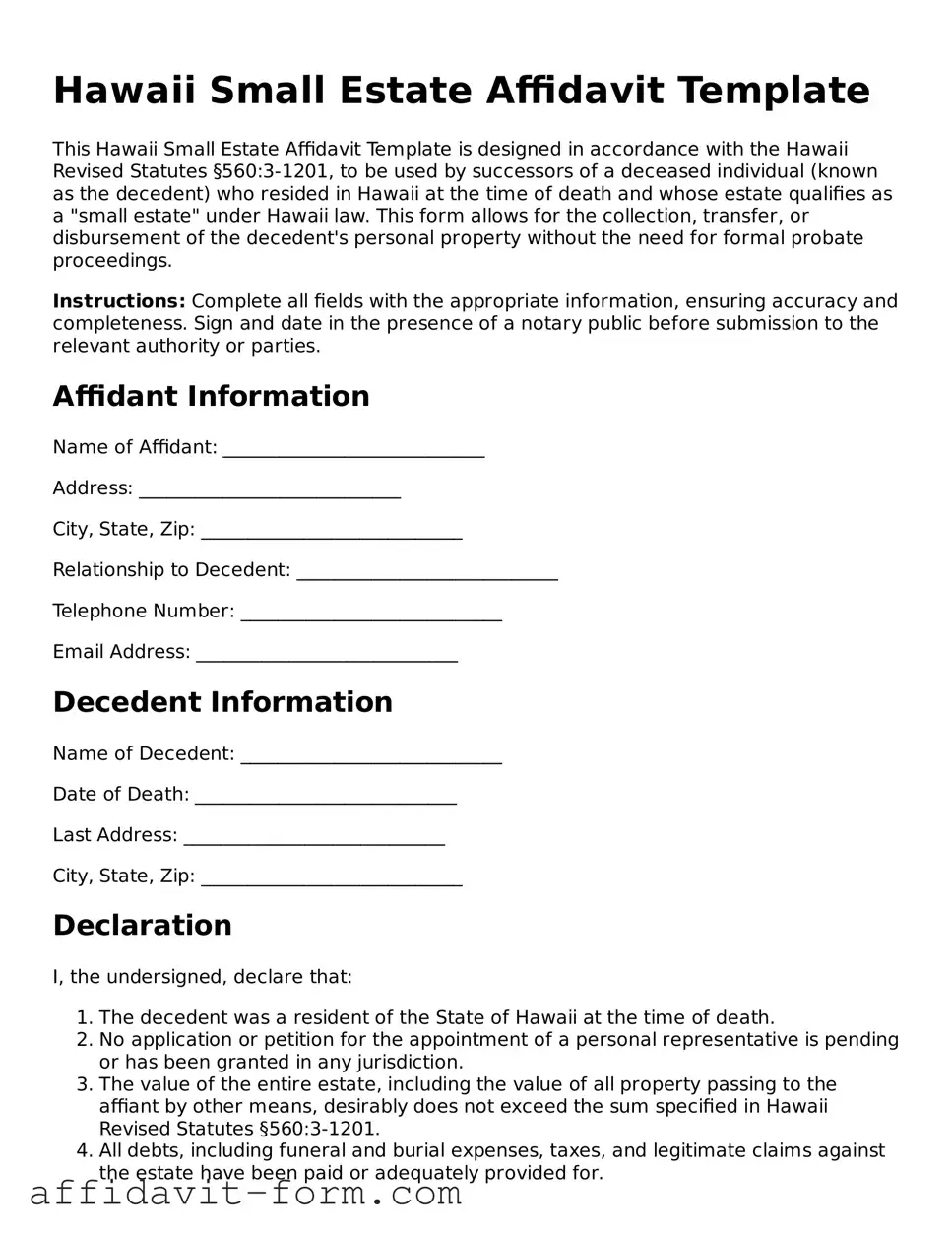Hawaii Small Estate Affidavit Template
This Hawaii Small Estate Affidavit Template is designed in accordance with the Hawaii Revised Statutes §560:3-1201, to be used by successors of a deceased individual (known as the decedent) who resided in Hawaii at the time of death and whose estate qualifies as a "small estate" under Hawaii law. This form allows for the collection, transfer, or disbursement of the decedent's personal property without the need for formal probate proceedings.
Instructions: Complete all fields with the appropriate information, ensuring accuracy and completeness. Sign and date in the presence of a notary public before submission to the relevant authority or parties.
Affidant Information
Name of Affidant: ____________________________
Address: ____________________________
City, State, Zip: ____________________________
Relationship to Decedent: ____________________________
Telephone Number: ____________________________
Email Address: ____________________________
Decedent Information
Name of Decedent: ____________________________
Date of Death: ____________________________
Last Address: ____________________________
City, State, Zip: ____________________________
Declaration
I, the undersigned, declare that:
- The decedent was a resident of the State of Hawaii at the time of death.
- No application or petition for the appointment of a personal representative is pending or has been granted in any jurisdiction.
- The value of the entire estate, including the value of all property passing to the affiant by other means, desirably does not exceed the sum specified in Hawaii Revised Statutes §560:3-1201.
- All debts, including funeral and burial expenses, taxes, and legitimate claims against the estate have been paid or adequately provided for.
- The legal description and/or other adequate description of all personal property and real estate, if any, owned by the decedent at the time of death is as follows (attach an additional sheet if necessary): ____________________________.
Signature
Under penalty of perjury, I hereby affirm that the statements made above are true and correct to the best of my knowledge, understanding, and belief.
Affidant's Signature: ____________________________ Date: _________
State of Hawaii County of _________
Subscribed and sworn to before me this ______ day of ___________, 20__ by _______________________________ (name of affiant).
Notary Public: ____________________________
My commission expires: ____________________________
